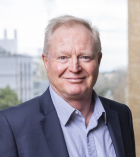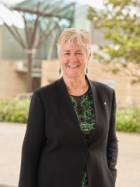The Tyree IHealthE Bionics and Bio-robotics Pillar is an open network designed to support and engage with anyone working, or with an interest, in the Bionics and Bio-robotics space. The pillar is supported by joint Technology and Medical Leads and spans research across the following areas:
Materials, Devices and Biomolecules
- New/improved bionic/robotic devices for health applications
- New and/or modified (existing) materials and/or coatings for bionic/robotic devices
- New approaches to therapeutics delivery and/or integration of other biomolecules with devices
Preclinical Models and Evaluation
- New techniques and processes to physically, chemically, electrically or biologically characterise bionic/robotic devices in vitro and in vivo
- Refinement of bionics and bio-robotics design toward application
Functional Data Mapping and Computational Modelling
- Translating medical images and biopotential recordings into virtual and physical models for surgical planning and preclinical evaluation
- Developing computational models spanning preclinical validation through to end use
If you are interested in knowing more, please don't hesitate to get in touch.
Bionics and Bio-robotics Pillar Leads
Medical Lead
Scientia Professor Gary Housley
Gary holds the Chair of Physiology and is director of the Translational Neuroscience Facility, School of Biomedical Sciences, UNSW Australia. His research program is broadly within molecular, cellular and systems physiology in the nervous system, particularly around neuroprotection in the CNS and auditory system. He has contributed prominently to understanding how hearing adapts to noise and ageing and mechanisms of brain injury. Study of neural development and synaptic plasticity in the auditory system informs on gene-targets for neural repair. This research has an applied arm with respect to bionics such as the cochlear implant which has led to development of an innovative gene therapy platform for auditory nerve regeneration which is currently in a first-in-human clinical trial (www.cingt.info) using delivery of naked DNA encoding nerve growth-promoting molecules delivered by UNSW Sydney patented BaDGE® - Bionic array Directed Gene Electrotransfer technology. Applications of this non-viral DNA/RNA delivery platform are being extended with international collaborators and industry partners across focal neurological disorders such as epilepsy, eye disease and immunotherapeutics.
Read a feature on BaDGE and Prof Gary Housley here
Technology Lead
Professor Laura Poole-Warren AM
Laura leads a research group focussed on design and development of novel materials for neural electrodes and other soft-tissue interfaces, and on 3D engineered neural tissue models. A key theme of her work is on design of new biosynthetic materials and understanding of material and device interactions with cells and tissues. Throughout her career, she has worked in academia, industry, and government bodies. She was a research professor at the New Jersey Centre for Biomaterials based at Rutgers University in the USA and a preclinical scientist in the biomedical industry working on development of wound dressings and embolic agents for cancer treatment from 1999 to 2001. She also served from 2003 to 2013 as a member of the Australian Government Therapeutic Goods Administration (TGA) statutory expert committee on the safety of medical devices. Between 2005 and 2018, Laura held various leadership appointments at UNSW including Faculty of Engineering Associate Dean Research, Pro Vice-Chancellor, Dean of Graduate Research and Chair of the inaugural Athena SWAN self assessement team (SAT). She was the inaugural Chair of the Australian Council for Graduate Research (ACGR), as well as being the Australian representative on the International Union of Societies of Biomaterials Science and Engineering. Laura was awarded honours in January 2020 as a Member of the Order of Australia (AM) for service to Biomedical Engineering and education, is a Fellow of four academies, ATSE, AIMBE, IUSBSE and the Royal Society of NSW. She is an Associate Editor of Biomaterials, and on the editorial board of the Journal of Neural Engineering.


